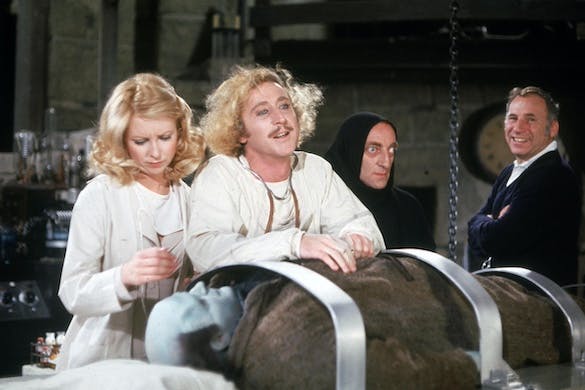The Genius of Gene Wilder
More of a loving tribute than a comprehensive look at the actor’s life and career, a new documentary often uses Wilder’s own voice and words, taken from the audiobook version of his 2005 memoir, as narration.

The new documentary “Remembering Gene Wilder” makes the case that the late comedic actor combined the talents of early Hollywood greats like Charlie Chaplin with mid-century stars such as Jerry Lewis and Danny Kay. With his innocence, humorous indignation, flair for pratfalls, and parodic inclinations, Wilder harnessed the watchful physicality of silent cinema to the more voluble and gag-based comedy of the Hollywood of the 1940s, ’50s, and ’60s.
More of a loving tribute to the actor than a comprehensive look at his life and career, the documentary often uses Wilder’s own voice and words, taken from the audiobook version of his 2005 memoir “Kiss Me Like A Stranger: My Search for Love and Art,” as narration. It tells an abridged story of his upbringing and personal life while primarily focusing on his most famous roles, highlighted via multiple excerpts from his films.
Playing at the Quad Cinema starting Friday, the doc entertains when viewed as a highlight reel, though the insight some of his collaborators and friends bring to the classic clips is often of the redundant sort, such as, “He was an actor who had an ability to be funny.”
Born Jerome Silberman at Milwaukee in 1933, Wilder exhibits a love of acting and comedy at an early age, particularly after his mother suffers a heart attack and young Gene is advised by a doctor to never upset her, to just “make her laugh.” The doc reminds viewers that his first movie was not “The Producers” but Arthur Penn’s “Bonnie and Clyde,” in which he had a small role as a young caretaker taken for a ride by the iconic outlaws. Mr. Penn’s comment to the actor that he never envisioned the part as funny demonstrates Gene’s innate artistry.
Naturally, a major portion of the documentary early on deals with the classic comedies Wilder made with Mel Brooks: “The Producers” from 1967, and 1974’s “Blazing Saddles” and “Young Frankenstein.” As a featured commentator, Mr. Brooks provides some amusing anecdotes about the making of all three, such as when one of the money men behind “The Producers” wanted more of a “leading man” for the role of Leo Bloom (instead of Wilder) and Mr. Brooks assented with the intention of actually ignoring the request, the first of many instances in which the director disregarded the notes of executives.
At one point, Turner Classic Movies’ Ben Mankiewicz equates the Brooks-Wilder collaborations with other iconic working duos such as Tracy and Hepburn or Spielberg and composer John Williams, yet the movie eventually gets to another of Wilder’s frequent partners: Richard Pryor. Between the late ’70s and the early ’90s, the twosome made four films, including “Stir Crazy” and “See No Evil, Hear No Evil,” and while they may not be on par with the masterworks directed by Mr. Brooks, clips from these movies demonstrate how each performer fed off the rhythm and reactions of the other.
As Wilder graciously puts it in interview footage, “I’m not a good actor; I’m a good reactor.”
Karen Wilder, Gene’s fourth and final wife before his death in 2016, also compliments his listening skills as a husband in the documentary’s final stretch. Tragedy had already struck Wilder’s life when his third wife, comic Gilda Radner, died of ovarian cancer, and the movie touchingly addresses her loss as a profound event in his life.
For all of his wackiness, one gets the sense Wilder was an intensely romantic individual, reflected in his later writing of romance-adjacent novels and painting of watercolors. Yet there is no mention of his first two wives, or his own battle with cancer, though the film does delve into his struggle with Alzheimer’s disease, of which he eventually died.
“Remembering Gene Wilder” leaves much of the actor’s professional story untold — tensions on set, say, and his reaction to the negative reviews of some of his films — and it speaks only briefly to the actor’s Jewish roots. Yet the breezy doc does inspire one to revisit his movies to see how Wilder brought his idiosyncratic touch to every filmic moment, like his entrance scene in “Willy Wonka & the Chocolate Factory,” where instead of the jaunty walk the script specified, the actor decided on the caned hobble that turns into a surprising somersault.
To paraphrase a statement by the actor, he never thought the script had the right ring to it — he wanted it to be Wilder.

